I am always looking for topics to write about and this one recently just fell into my lap. I have not seen a lot on turntable mats; when I brought it up at a recent meeting of the Sacramento Audio Group, the members thought it would be a great and fun exercise for a club get-together. Since one of the members had just completed his latest speaker design and amp build, we figured this would make for a productive afternoon.
We put out the word to the members to bring their best mats for a shootout. Five members showed up. Originally, I wanted to do this as a blind evaluation and use two different turntables, one high end and one budget. I also wanted to include technical tests for things like frequency response, distortion, and resonance, but logistics prevented this from happening. But since we were putting a bunch of audiophiles in a room listening to a system and trying to reach a consensus, I figured what could go wrong?
The Mats for Evaluation
Dudley Sound Glass Mat — This is one of my personal mats; it sold for about $100 forty years ago.
Hudson HiFI Acrylic Mat — Precision Machined Acrylic Turntable Platter Mat w/Record Label Recess. Sold through their website for $23.50.
Hudson HiFI CORKery — Decoupled Cork N Rubber Turntable Platter Mat sold through their website for $22.
Hudson HiFI Silicone Rubber — Turntable Platter Mat Sold through their website for $15.49.
Denon Heavy Rubber Mat — which came standard with the Denon DP-2000 turntable.
Soundsaver Carbon Fiber — This was supplied by one of the members and I don’t have any information on it.
Music Hall cork turntable mat — retails for $49.99.
Sorbothane Pucks — from my collection of accessories. I wanted to use the AudioQuest Sorbothane mat that I used to have but, apparently, I sold it, so the pucks had to do for this evaluation.
Soft Felt — a generic felt mat that sells online for around $15.
Boston Audio Carbon Fiber/Cork mat — brought by a SAG member. Retail price $200.
Torqueo Copper Mat Cu-2900 — $1900 retail. This was supplied by one of the SAG members.
Graphite Mat — This was brought by another of the SAG members. Regrettably, it was not labeled with a brand name or model number.
Evaluation System
Custom-built open baffle bi-amped DSP speakers utilizing an Eminence 12” woofer, Mark Audio CHR120 midrange and Peerless Ring Radiator tweeter. Designed and built by Steve O’Toole. Steve’s design reminds me a lot of the Nola Viper from years ago.
Denon DP2000 turntable with Jelco 750 tonearm and Audio Technica 740ML cartridge. A record clamp was used with all mats.
Deklimo Phono Pre-amp.
Marantz 7 clone amp heavily modified by Steve O’Toole: 10 Watt Class A Single Ended Parallel EL84 amp driving the speakers’ midrange and tweeter.
Nakamichi PA-7 200 wpc amp used for the bass.
The Electronic crossover was a Mini DSP 2×4 hd.
Klipsch Reference 12 Subwoofer.
Teflon Silver custom-built wire built by Steve O’Toole.
Evaluation Protocol
We listened to the system for about an hour with various music selections in order to familiarize ourselves with the system and establish a sonic baseline to work from.
We started the evaluation with the single track, “Complete,” from You Get More Bounce with Curtis Counce by the Curtis Counce Group. This is a first pressing monaural recording from 1958. Oh, and we used a record clamp during each evaluation.
The evaluations started with the stock heavy-duty rubber mat Denon supplied with the turntable. We listened for bass character, vocal detail and naturalness, and high frequency detail and openness. Since our first listening choice is monaural, we weren’t concerned with depth of stage or separation. Initially, we wanted to establish a standard from which to judge.
The first mat swap was to the Boston Audio Carbon Fiber with Cork bottom. We immediately noticed the sound was notably louder. Bass seemed more articulate. Transitions on the horn were far clearer and the highs were slightly smoother. We switched back to confirm what we heard. One of the members commented that the pops and clicks even sounded better. I don’t think any of us expected this much improvement in sound from just a mat change.
We then switched to the Hudson HiFi Acrylic mat. Because this is a rather slim mat, we needed to add a felt mat underneath it to keep VTA reasonably consistent. The Hudson was a noticeable improvement over the stock rubber mat, but not as good as the carbon fiber/cork mat. Bass was improved, but mids and highs were not noticeably improved.
Our third mat to test was the Torqueo Copper Mat Cu-2900 at $1,900 retail. Bass was the best so far, but the mid-band still lacked the natural quality we heard with the Carbon fiber/cork mat. Early consensus: although excellent, considering its retail price, none of us would make the investment.
Our fourth mat was the unbranded Graphite mat, which also required an under-mat. This time we added a thin generic cork mat to adjust the height. Bass was slightly exaggerated, which caused a blurring of mid-range. Overall the performance was somewhat disappointing by comparison.
Next, we moved to the Dudley Glass mat. The bass was much improved and mid detail was very good, but still not quite as good as the Carbon Fiber mat. We decided to use a cork mat under the Glass and found that the added cork moved things much closer sonically to the Carbon Fiber/cork combo.
At this point, we changed records, switching to a modern well-mastered record from Diana Krall, Live in Paris, and the song “Let’s Fall in Love.” To re-establish our baseline, we switched back to the Denon Mat and listened to the new cut.
We revisited the Carbon Fiber/cork mat and all concurred this is a great sounding mat. Very listenable, natural voices, and the applause at the end sounded clear and well defined.
We returned again to the copper mat for another listen. We all noticed that Ms. Krall’s voice, although very good, just did not sound as real. Stephen commented that he liked the air with this mat the best. We all agreed the bass was definitely the best, with the bass riffs being very detailed. The mids were clean, but something sounded slightly artificial about it. Mike thought it was “overly pretty.” The lower register of Ms. Krall’s voice also seemed enhanced.
We switched again back to the Glass and cork underlay and noted it was definitely warmer sounding than the copper mat, was as musical as the carbon fiber, and had much better bass detail and presence than the stock rubber mat.
Next, we decided to go all cork. We needed a double layer to raise the record up to adjust for arm height. The general consensus was definitely different from the rubber, but compared to the Copper, Carbon, and Glass, the bass comparatively disappeared. But the mids and highs were nice and very listenable.
Next on the list was the Hudson Silicone mat. After listening to our reference cut, we all agreed it sounds virtually identical to the Denon mat and we quickly moved on to another mat.
Our next choice was the Sorbothane pucks. I placed eight 1.5” rounds around the outer edge and eight .75” pucks around the center of the platter. We felt these worked nearly as well as anything we tried before, although the result was a little softer sounding. Bass was excellent, the pace seemed slightly slower, and mids were natural. All in all we agreed the pucks offered surprisingly good performance; no one had any negative comments.
In an attempt to see if the sound would change, we reduced the number of pucks and placed the glass mat on top of the pucks for another listen. We liked it but it didn’t make a huge difference from either solution separately. We concurred this would be a combination that doesn’t make sense.
Still combining materials, we removed the glass and replaced it with the carbon fiber mat on top of the Sorbothane. We listened and then removed the Sorbothane and listened again. We collectively felt the added Sorbothane seemed to overdamp the music. So either use one or the other but not both together.
Our final choice was the Carbon Fiber used in conjunction with the stock Denon rubber mat. It was very slightly cleaner through the mid-band, but other than that, not very interesting.
Conclusions
First, I want to comment that I was amazed that six audiophiles in one room listening to multiple mats could arrive at a consensus. Each and every one of us came up with the same conclusions concerning the order of relative performance for the turntable mats we evaluated.
During our testing as a group we discussed cost versus performance to establish an intrinsic value for each mat. Would the mat be a better choice than, say, investing that money in a better cartridge or cable? These discussions continued throughout the day.
I joked earlier in this article about what could go wrong, thinking without any hard and fast test data we would be all over the map concerning our evaluations. That just didn’t happen. This is our combined unanimous ordering for each mat’s performance as we all heard it. Here are the top five in descending order of performance.
#1. The best mat was the Carbon Fiber/Cork mat. We were able to find other Carbon Fiber mats online, but none with a cork base. You might be able get a carbon fiber mat and DIY a cork underside.
#2. The Glass Mat with cork under it came in as a solid second. Our research indicated Glass Mats are available and start at around $100. Like the Carbon Fiber mat, by adding a cork base, you are able to achieve excellent performance well worth the investment. Basically, the performance improvement far exceeded the combined financial investment.
#3. Our third choice was the Sorbothane. As I mentioned in the beginning, I used to have a Sorbothane mat from AudioQuest that I really loved. I did some research and found the “Isolate IT” Sorbothane Mat for only $50, which, in my opinion, sounds like it might be an excellent value.
#4. The Torqueo Copper Mat Cu-2900 at $1,900 retail came in fourth. It looked great and sounded very good, but we found it hard to justify the asking price.
#5. The Hudson HiFi Acrylic mat held the fifth position in the ranking. Considering its rather modest price of only $23.50, this mat is an excellent optional upgrade. We also felt that it was improved by adding a cork under-mat, still keeping it a very modest investment. I would give the combination a best-bang-for-the-buck recommendation.
The cork mats seem to work well as an alternative to a stock rubber mat, especially a thin rubber mat. Cork may be something to consider as an affordable platter mat option.
Our overall feelings on felt mats are they make a lot of sense for a DJ in need of a slip mat, but for audiophile use, it is only good as an under-mat to compensate for height on turntables without VTA adjustment.
Additional Thoughts
I had requested a sample leather mat from a couple different manufacturers but I never received them. Also, none of the members of the club had one for this evaluation. I have used leather mats in the past on Pro-ject turntables and felt they made a noticeable improvement in performance over the stock mat supplied by Pro-ject. It is regrettable that we didn’t have one available for this test.
I had also brought an ultra thin Carbon Fiber mat from Sound Saver, which we decided not to test as it is so thin and is really only designed to eliminate static. I listened to the mat later at home and although I can’t confirm or deny whether it affects static, I can confirm it does absolutely nothing sonically.
Also, we did not get into how and why each of these materials performs the way they did in our evaluation. That may be a good subject for a future article.
I hope this article was of interest and worthwhile if you are considering a platter mat upgrade.
Copy editor: Dan Rubin
- (Page 1 of 1)


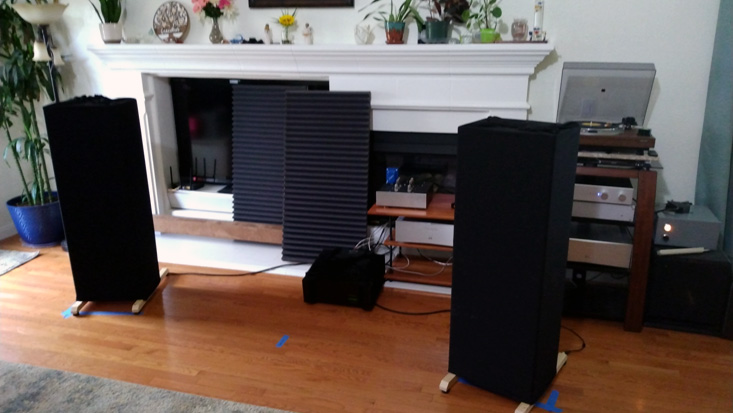
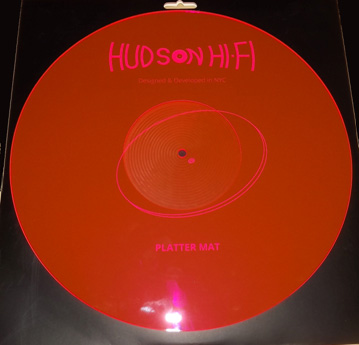
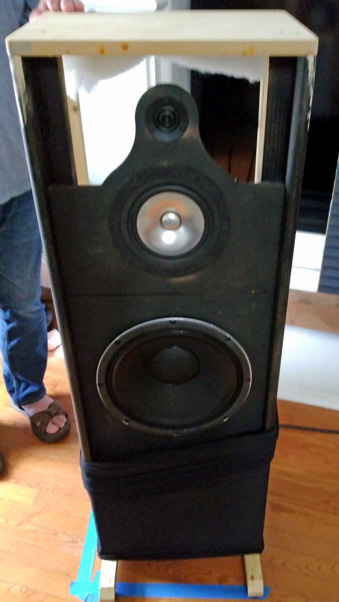
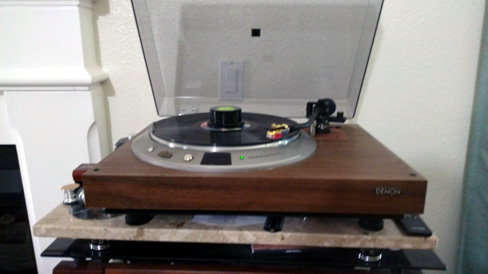
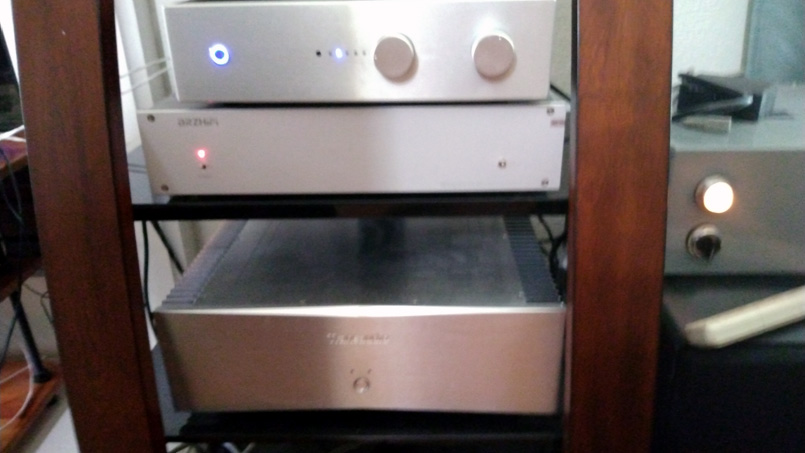
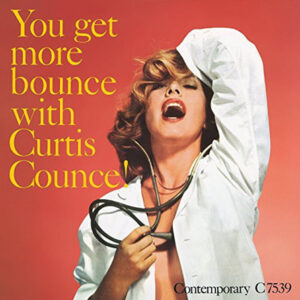
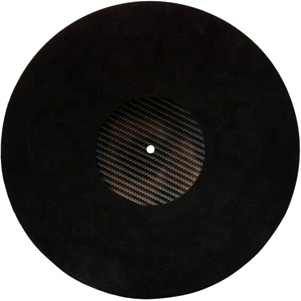
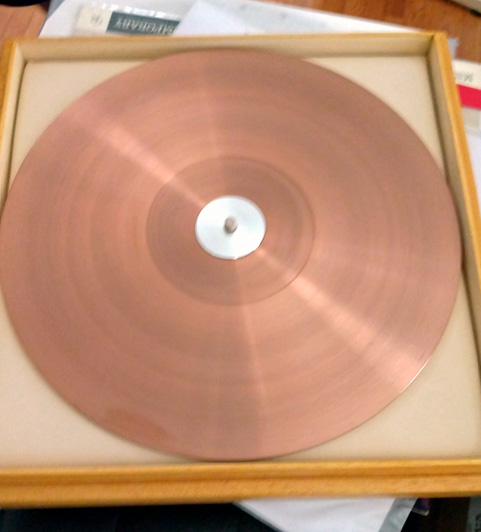
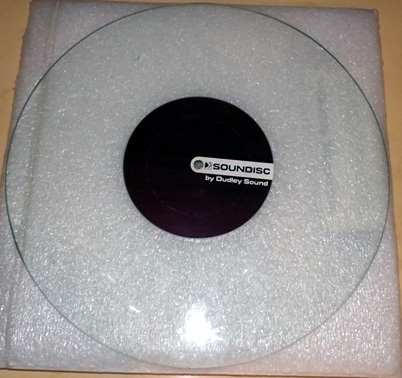

As a fellow Central Valley audiophile, is there a website or contact info for this group?
Yes. Contact Steve O’toole
sotoole@sotoole.com
I run an acrylic platter on my RP1. I do not have felt or anything–I just run my vinyl on the acrylic and it sounds good. However, am I doing this wrong? Should I run felt or cork?
I have used both cork and leather on an acrylic platter and either will improve performance.
Unless you have an arm with on the fly VTA, this whole exercise seems a bit un technical. The subtle difference in VTA makes the kind if difference you notice between mats. I have a Reed 3P and i can get all the sonic changes you mentioned with each mat by adjusting the VTA